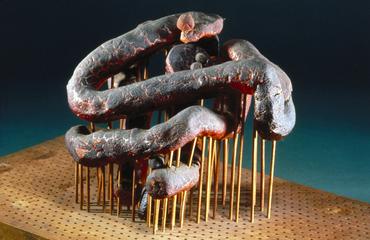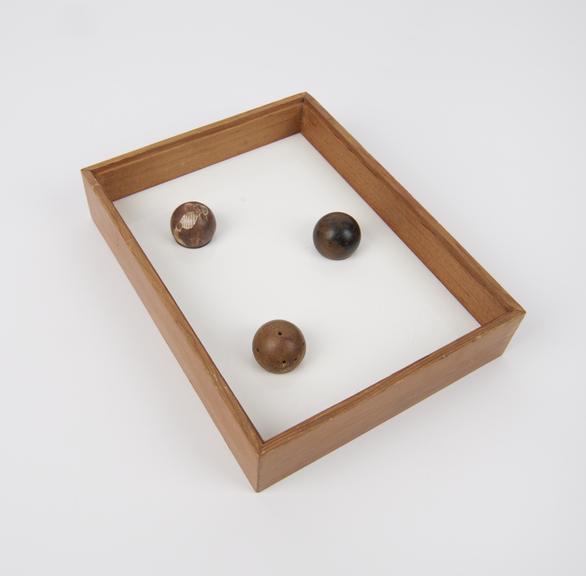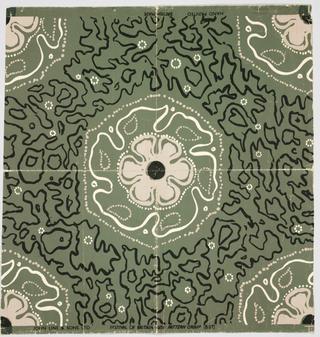

Part of ball and spoke model consisting of three coloured wooden spheres, bored with varying numbers of holes, English, unsigned, 1800-1844. Used by John Dalton, Manchester, to demonstrate his atomic theory.
These simple diagrams represents one of the greatest single strides made in the whole history of chemistry, and, indeed, of our understanding of the constitution of all created things. The idea of an atom is very ancient but it was not until 1803 that it became a scientific idea in the sense of being used as the basis of a general theory linked with exact measurement. John Dalton, a Quaker teacher in Manchester,suggested that each element is made of characteristic atoms.
The balls are the only surviving specimens from a set made by his friend Peter Ewart to help Dalton explain his theory to pupils.
Details
- Category:
- Experimental Chemistry
- Object Number:
- 1949-21
- Materials:
- wood (unidentified), plaster and paint
- Measurements:
-
display case: 40 mm x 19 mm x 145 mm,
spheres: 25 mm,
- type:
- ball and spoke models and atomic models
- credit:
- Society of Friends




